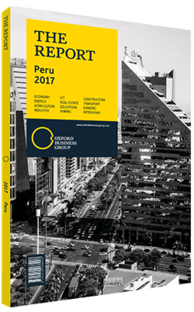Essential things to know before your trip to Peru
Etiquette
Given Peru’s rich historical and ethnic heritage, its culture is diverse and varies slightly from region to region. Peruvians are generally polite and friendly, and strong friendships often go a long way in opening doors and securing opportunities in the business world. Standard business attire is the same as in the US or Europe. Customary greetings are one kiss on the cheek between women and between men and women. Men greet each other with a handshake.
Transport
With more than 10m people in Lima, traffic is an issue, especially during rush hours, which fall between 7.00am-9.00am and 5.00pm-7.00pm. Expansion of the metro and an integrated bus system is expected to help reduce this load. In Lima and other urban centres the most common means of transportation other than the metro and the bus are taxis, many of which are informal. Metered taxis are rare and fares must be agreed upon beforehand. A standard fare from the airport to the more touristic districts is around 35-50 soles. Hotels normally provide taxi services, though at higher prices than informal taxis. Apps such as Uber and EasyTaxi work well in Lima. The most typical mode of domestic travel is by bus, used by more than 80m people annually for distances varying from three hours between Lima and Paracas, to 24 hours from Lima to Cusco. There are 19 airports of significant size, 12 of them with international connections. The airports of Lima, Arequipa and Cusco handle most of the 8m-passenger annual airport traffic. The most common domestic route is Lima-Cusco, with 15 daily flights.
Language
Though Spanish is the official language, Peru is considered a multi-lingual nation, with a number of indigenous languages spoken across the country. The most common ones, Quechua and Aymara, are predominantly spoken in the highlands and the jungle regions. English is spoken mainly in touristic destinations such as Cusco and Lima, but knowing some Spanish will make your stay more pleasant.
Business Hours
Office hours are generally from 9.00am-6.00pm from Monday to Friday. A number of businesses – including banks and currency exchange agencies – are open for part or all of Saturday. A lunch break is common for most businesses.
Communications
SIM cards can be purchased at airports or at a variety of retail outlets. Local and international data plans are available. Internet coverage extends to most of the country. A growing number of establishments and businesses are beginning to offer wireless internet on their premises.
Currency
The sol (PEN) is the official currency of Peru, and is available in 10-, 20-, 50-, 100- and 200- note denominations. There are also 1-, 2- and 5-sole coins and 10-, 20- and 50-cents coin. US dollars are widely accepted across Peru. Both official and unofficial currency exchange agencies are common, especially in touristic areas. It is also not uncommon to find formal and informal cambistas, or street currency exchangers. To avoid counterfeit bills, formal outlets and cambistas are preferable.
ATMs are available predominantly in urban centres and generally accept most major international cards. It is possible to withdraw soles or US dollars, though exchange rates are often less favourable at ATMs Credit cards are widely accepted across the country. At the time of writing, the exchange rate was $1:PEN3.29, €1:PEN3.68 and £1:PEN4.24.
Visa Requirements
Citizens from most countries in Europe and South America and North America do not require a visa to enter Peru. Tourist stamps are issued upon arrival at most airports or land borders, for a 30-, 90-, or if requested, a 183-day period. Extensions are available only for certain countries, and overstays will result in $1 per day fines.
Electricity
The electrical current is 220 V, 60 Hz AC, often with dual-voltage outlets accepting both European and US-style round- and flat-pronged plugs. Adapters are available in cities around Peru.
You have reached the limit of premium articles you can view for free.
Choose from the options below to purchase print or digital editions of our Reports. You can also purchase a website subscription giving you unlimited access to all of our Reports online for 12 months.
If you have already purchased this Report or have a website subscription, please login to continue.

